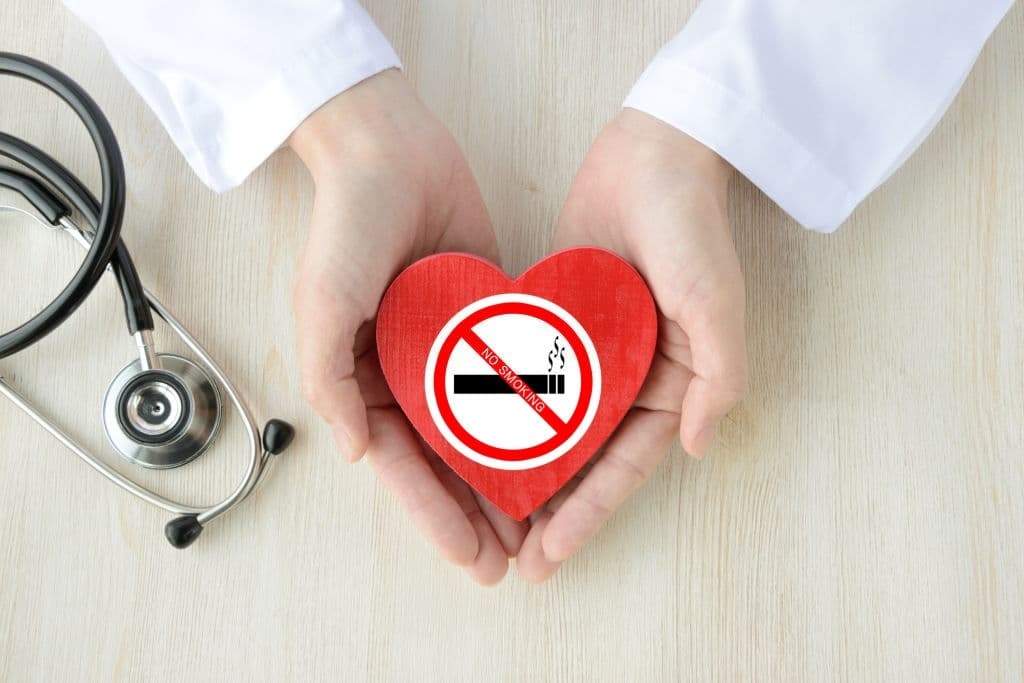Over 1 billion people worldwide smoke. However, even if you don’t, this issue still concerns you – because 1.2 million people die each year from health conditions related to passive smoking. This means that if you have a relative, a friend, a co-worker, or a partner who smokes on a daily basis, both they and you are exposed to a number of health risks.
Of course, this does not apply in every case; for example, your chance of developing lung cancer is unlikely to increase if you pass an active smoker on the street. However, if you frequently find yourself in situations where smoking is not restricted (for example, a smoking area near your workplace) or if you live with a smoker, this can have a serious impact on your health.
If you’re wondering what you can do in such a case, we’ve got some suggestions. Read on – and learn more about the risks of passive smoking and ways to prevent them.
Table of Contents
What are the Risks Associated with Passive Smoking?

There are numerous ways that passive smoking can affect your health. Here are some of them:
1. Lung Cancer
Lung cancer is one of the most common types of cancer – and every year, over 47,000 people get diagnosed with it in the UK. When detected early, it is highly treatable; however, no symptoms normally appear during this stage, so many people are unaware they have it.
2. Heart Disease
If you smoke, you’re three times more likely to have a heart attack than if you didn’t. Furthermore, passive smoking causes roughly 53,000 heart-related deaths each year. This means that if you live with a smoker, your chances of having heart disease increase.
It is preferable if you ask your partner or flatmate to refrain from smoking in front of you or your children or switch to vaping (and flavorful e-liquids – for example, Dinner Lady) – this will reduce your exposure significantly.
3. Asthma
Asthma attacks typically result from acute inflammation of the airways in the lungs. If you have asthma, you may already know that some symptoms include shortness of breath, wheezing, and coughing.
While it is possible to develop asthma as a result of passive smoking at any age, this issue typically occurs among children whose parents smoke frequently. Therefore, if you want your kids to lead a healthy life, it’s best to quit smoking – or at least make sure that they are not exposed to second-hand smoke.
4. Low Birth Weight
Studies show that babies born to mothers who were exposed to secondhand smoke have a lower birth weight and are more likely to be born prematurely than babies whose mothers did not have similar experiences. Moreover, babies whose mothers smoke – whether actively or passively – are more likely to have a lung condition or die from SIDS (sudden infant death syndrome).
5. Diabetes
Passive smoking is often associated with a higher risk of developing type 2 diabetes. This is so because even secondhand smoke inhalation leads to insulin resistance – a condition that, if untreated, can lead to diabetes.
Moreover, several studies have found that diabetics who are exposed to second-hand smoke have higher blood sugar levels than those who do not, increasing the risk of complications such as heart disease and eye problems.
6. Sleep Problems/Insomnia
Exposure to second-hand smoke can make it difficult to get good rest when you sleep. This is because the carbon monoxide found in smoke deteriorates the structure of cells in your body – including those in your nose and throat. As a result, your ability to breathe properly while you sleep may be significantly decreased, which will prevent you from getting adequate rest.
How to Prevent Passive Smoking?

If you’re living with a smoker, there are a number of steps you can take to reduce exposure to second-hand smoke.
1. Set Clear Boundaries
First of all, it’s important to create some boundaries. For example, if you live with someone who smokes, you could inform them that you do not want them to smoke in the house. Ideally, they will respect your wishes – but if not, this may be one of the more difficult issues to deal with.
2. Use an Air Purifier
Purchase and install an air purifier in your home. These devices remove contaminants from the air and aid in the elimination of odours, particularly those caused by cigarette smoke. An air purifier will keep your indoor air pure, allowing you to breathe more easily.
3. Keep Your Home Ventilated
If someone smokes within or near our home, ensure that there is adequate ventilation. If not, make sure you have several windows that open and close easily – so that you can open them whenever you need.
4. Clean Your Home Regularly
Make sure to properly clean the house – especially the areas where smoking often occurs (for example, near the windows). This will help keep the air pure, allowing you to breathe easily and get enough rest at night.
5. Avoid Smoking Areas
Unfortunately, many people smoke – and that means that you can’t easily eliminate the risks related to passive smoking from your life. However, to reduce them, avoid smoking areas near your home, office, or any other place you frequently visit (such as bars or restaurants).
Conclusion
As you can see, even if you don’t smoke, you still can suffer from issues related to passive smoking. Secondhand smoke inhalation can cause a variety of health conditions, including heart disease, lung cancer, and type 2 diabetes – so it’s critical that you take action to decrease your exposure to it. Whether talking to your partner, avoiding smoking areas, or buying an air purifier, there are many things you can do to prevent passive smoking.
We hope that you found this information useful – and that you will be able to take measures to improve your health.




